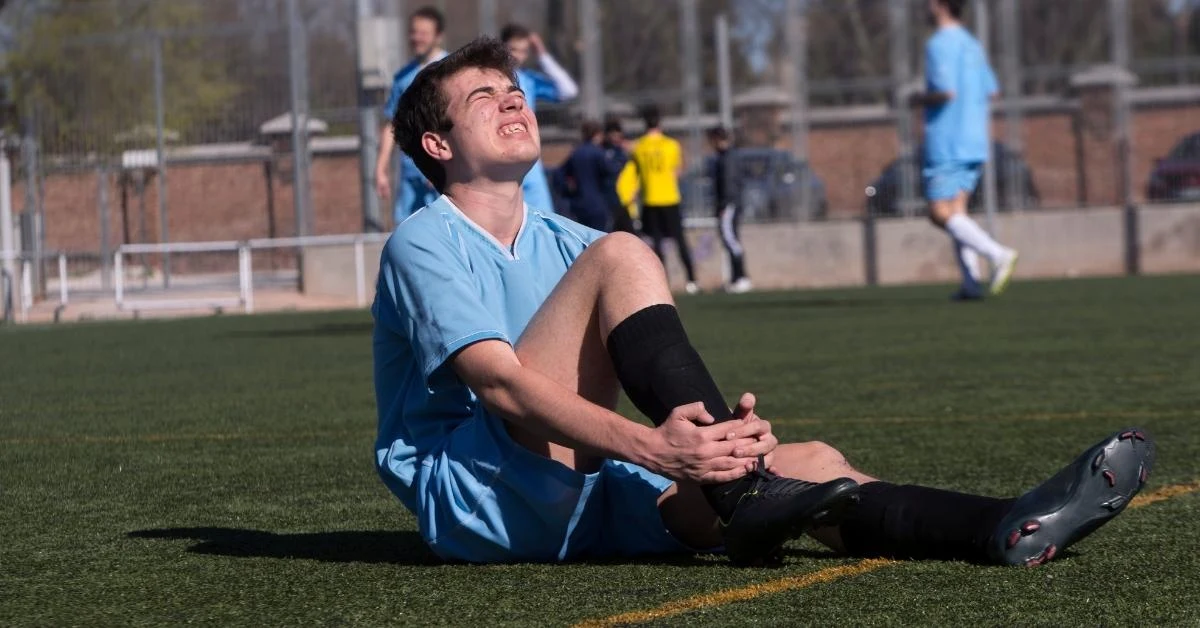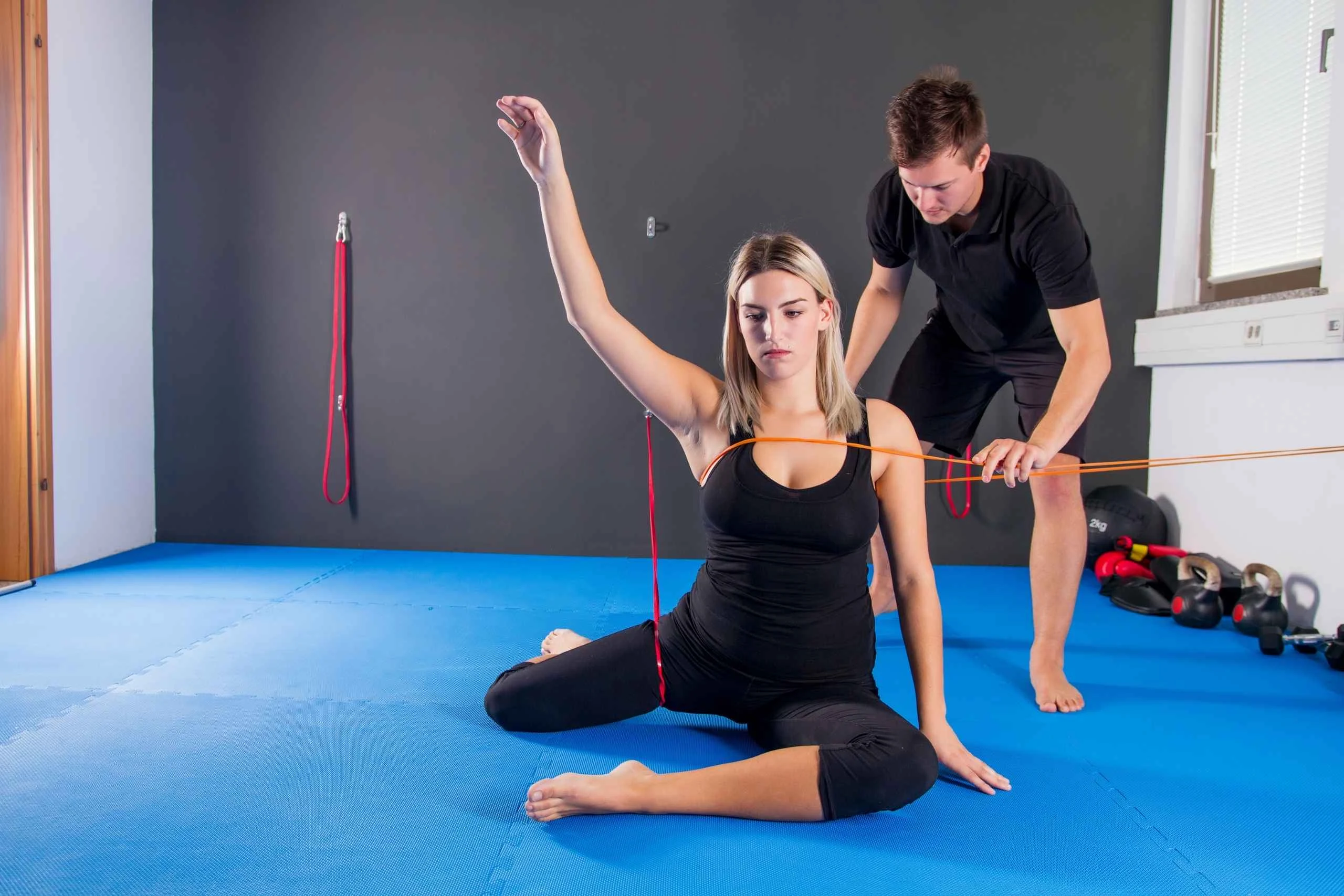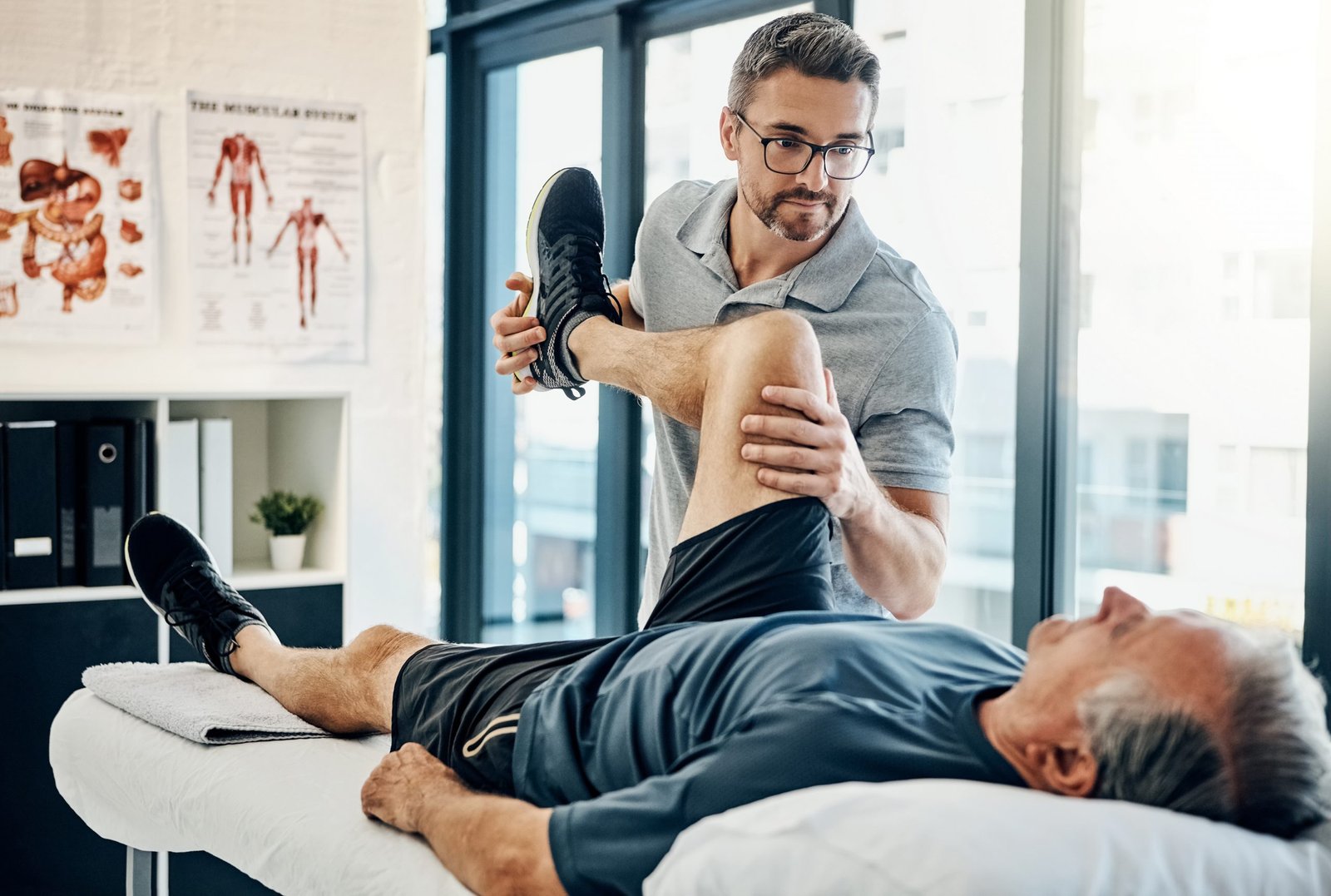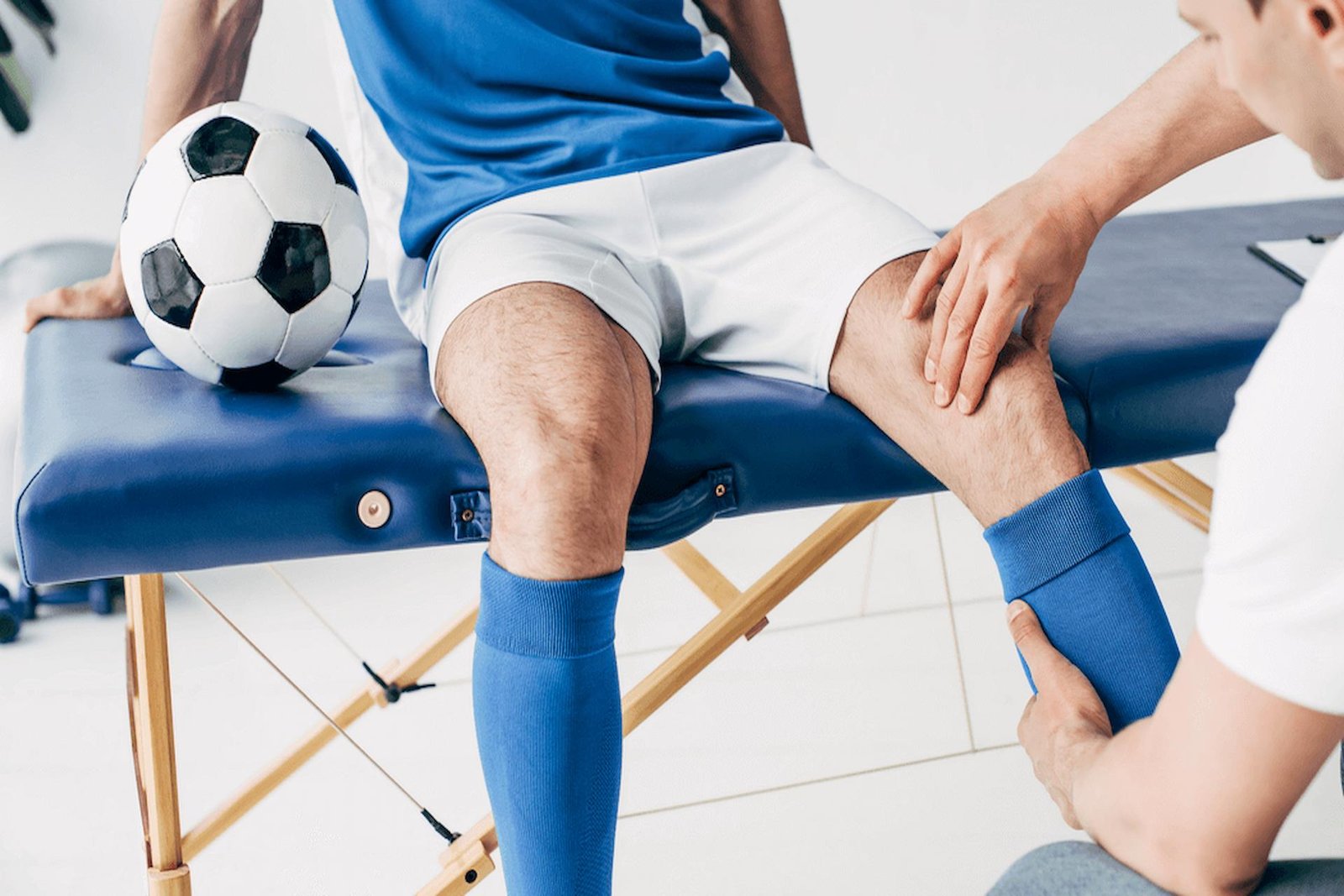Whether you’re a professional athlete or a weekend warrior, sports injuries can sideline your passion and performance. From sprains to serious ligament tears, these setbacks demand effective recovery strategies to get you back in the game. Physical therapy is a cornerstone of sports rehabilitation, offering tailored treatments to heal injuries, reduce pain, and boost athletic performance. By addressing the root causes of injuries and optimizing movement, physical therapy ensures athletes recover faster and stronger while minimizing the risk of recurrence.
In this comprehensive guide From Loucil Chiropractic, you’ll learn how physical therapy transforms recovery from sports injuries, the specific techniques used, and why it’s essential for both healing and enhancing your game. Here’s what you’ll gain:
- Insight into how physical therapy speeds up recovery from sports injuries.
- Understanding of common sports injuries and their tailored treatments.
- Knowledge of advanced therapies like the antigravity treadmill and manual therapy.
- Tips to prevent injuries and optimize performance through athletic injury therapy.
Let’s dive into how physical therapy can help you reclaim your strength and agility.
What is the Role of Physical Therapy in Sports Injury?

Physical therapy serves as a critical component in managing sports injuries, offering a structured approach to healing and prevention. It is one of the most effective treatments for sports injuries, combining targeted exercises, manual techniques, and advanced therapies. Sports physical therapists, trained in athletic biomechanics, assess injuries with precision and develop tailored plans. These plans address immediate pain and dysfunction while building long-term health. At Loucil Chiropractic in Ives Estates, we specialize in sports injury recovery, providing personalized care to help you heal faster and perform better.
Therapists evaluate the injury’s impact on your body, considering joint stability, muscle strength, and sport-specific movement patterns. For instance, a soccer player with an ACL injury may work with a physical therapist to develop a tailored recovery plan, while a swimmer with a rotator cuff issue will need a different approach. The rehabilitation process follows five stages: pain management, restoring range of motion, rebuilding strength, functional training, and returning to sport. These stages ensure progressive recovery, addressing acute injuries like muscle strains and chronic conditions like tendinitis.
Physical therapy also focuses on prevention by identifying movement patterns or muscle imbalances that increase injury risk. Through techniques like proprioception training, therapists improve balance and coordination, essential for sports requiring quick directional changes, such as basketball or tennis. Without physical therapy, injuries may heal improperly, leading to chronic pain, reduced mobility, or recurring issues that hinder performance. By tailoring treatments to your sport’s demands, physical therapy ensures you recover fully and perform at your peak.
The process begins with a thorough assessment to understand the injury’s cause and impact. For example, a runner with shin splints may have improper foot mechanics, which a therapist can correct through gait analysis and strengthening exercises. Physical therapists treat injuries using a combination of hands-on techniques, exercise prescriptions, and advanced modalities to promote healing and restore function. This comprehensive approach ensures athletes can return to their sport with confidence.
Key Benefits of Physical Therapy for Athletes
Physical therapy offers benefits that extend beyond injury recovery, supporting athletes in achieving optimal performance and resilience. It incorporates four forms of rehabilitation restorative, corrective, preventive, and maintenance to address immediate needs and long-term goals. These methods promote faster healing by enhancing tissue repair, improving blood flow, and reducing inflammation through targeted interventions.
Faster Recovery From Injuries
Physical therapy accelerates recovery time for athletes by addressing pain and inflammation early. The four steps used to treat sports injuries pain relief, mobility restoration, strength rebuilding, and functional training provide a structured path to healing. For example, in knee injury rehabilitation, therapists use targeted exercises like quadriceps strengthening to stabilize the joint, often reducing recovery time significantly. Early intervention prevents complications, ensuring you return to your sport sooner. Consistent therapy can cut weeks off recovery for minor injuries like sprains, while severe injuries like ACL tears may see improved outcomes with dedicated care.
Improved Flexibility and Mobility
Flexibility and range of motion are vital for athletic performance, particularly in sports like gymnastics or swimming. Physical therapy incorporates stretching and mobility exercises to restore joint function, allowing smoother and more efficient movements. During the mobility restoration phase, therapists use gentle stretches and joint mobilizations to regain full range of motion, laying the groundwork for subsequent rehab stages in sports activities. For instance, a tennis player recovering from a shoulder injury might focus on stretches to improve overhead motion, essential for serving.
Pain Management Without Over-Reliance on Medications
Physical therapy prioritizes natural pain management methods, reducing the need for medications. Techniques like heat therapy, ice application, and electrical stimulation alleviate discomfort by targeting the source of pain, such as muscle imbalances or joint inflammation. This approach aligns with the initial pain management stage, ensuring athletes progress through recovery without pharmaceutical side effects. For example, ice therapy can reduce swelling in an acute ankle sprain, while electrical stimulation supports muscle recovery in chronic injuries.
Injury Prevention Strategies
Preventing sports injuries with PT involves analyzing biomechanics to identify and correct weaknesses, such as tight hamstrings or improper posture. Therapists use corrective exercises and proprioception training to enhance stability and reduce injury risk. This preventive focus, part of the maintenance rehabilitation form, helps athletes avoid setbacks, particularly in high-impact sports like football or running. For instance, a soccer player might work on balance drills to prevent ankle sprains during rapid directional changes.
Enhanced Strength and Performance
Physical therapy builds strength in sport-specific muscle groups, improving endurance, power, and agility. A volleyball player might focus on shoulder and core strength to enhance spiking ability. The strength-building phase of rehab ensures athletes regain full function and are better equipped to handle their sport’s demands. Exercises like resistance training or plyometrics, guided by sports medicine principles, can boost performance, giving athletes a competitive edge while helping to prevent future injuries. This phase also prepares athletes for functional training, ensuring they can perform sport-specific movements with confidence.
Common Sports Injuries Treated with Physical Therapy

Sports injuries vary in severity, with some, like ACL injuries, being among the hardest to recover from due to their complexity and long healing times, often spanning six to twelve months. Others, like stress fractures, also require extended recovery because of the slow regeneration of bone tissue. Physical therapy employs specific rehabilitation methods, including exercises like isometric contractions, resistance training, and balance drills, to address these challenges effectively. Without therapy, injuries may heal improperly, leading to chronic pain, reduced performance, or re-injury.
- Sprains and Strains: Common in sports like soccer, sprains and strains benefit from sports injury recovery exercises such as stretching and progressive strengthening. These therapy techniques are tailored to the specific injury’s severity and stage, ensuring proper healing and recovery. For example, a hamstring strain might involve gentle stretches early on, progressing to resistance exercises as healing advances.
- ACL Tears and Knee Injuries: An ACL injury requires intensive rehabilitation, including quadriceps strengthening and balance exercises to stabilize the knee. The three phases of injury rehab—acute recovery, subacute strengthening, and functional restoration—are essential in sports medicine, guiding the process to ensure a full return to physical activities. Recovery can be lengthy, but therapy ensures proper healing.
- Tendinitis: Overuse injuries like tendinitis in the elbow or Achilles tendon respond well to eccentric exercises and manual therapy, which reduce inflammation and promote tissue repair. Consistent therapy prevents recurrence of these chronic conditions, addressing their root causes.
- Rotator Cuff Injuries: Common in sports like baseball, rotator cuff injuries are treated with shoulder-specific exercises to restore strength and mobility. Recovery can take months, especially for severe tears, but therapy ensures proper healing and prevents further damage.
- Shin Splints, Stress Fractures: Shin Splints, Stress Fractures, and other common sports injuries occur frequently among athletes. Runners often face shin splints or stress fractures. Physical therapy uses low-impact exercises, such as pool-based workouts, and gait analysis to support recovery and prevent recurrence, addressing the slow healing nature of bone injuries.
Therapists tailor treatments to each injury, ensuring optimal outcomes through a structured approach. Specific exercises, like leg raises for knee injuries or scapular stabilization drills for shoulder injuries, are integrated to support recovery across all stages.
Advanced Techniques in Sports Physical Therapy
Physical therapy incorporates advanced techniques to enhance sports rehabilitation, aligning with the five stages of rehabilitation during the treatment of sports injuries: pain management, mobility restoration, strength training, functional recovery, and return to sport. These methods support faster healing and help athletes regain full function, addressing both acute and chronic conditions.
Manual Therapy and Massage
Manual therapy involves hands-on techniques like joint mobilization and soft tissue massage to improve circulation, reduce muscle tension, and diagnose issues. Massage promotes relaxation and supports recovery from intense training, particularly during the pain management and mobility restoration stages of sports medicine. For example, deep tissue massage can alleviate tension in neck and back injuries in athletes, aiding healing and improving flexibility.
Electrical Stimulation (TENS)
Electrical stimulation uses low-voltage currents to stimulate muscles, enhancing strength and circulation. It’s particularly effective for recovery from sports injuries and managing pain in chronic conditions like tendinitis. This technique supports the pain management phase, helping athletes progress to active rehabilitation. For instance, TENS can reduce discomfort in a strained calf muscle, allowing earlier introduction of strengthening exercises.
Red Light Therapy
Red light therapy uses specific wavelengths to accelerate tissue healing and reduce inflammation. It’s a non-invasive method that supports physical therapy after sports injuries, promoting faster healing across all rehab stages by enhancing cellular repair. For example, it can speed recovery in overuse injuries like tendinitis or muscle strains by improving blood flow to affected tissues.
Compression Therapy
Compression therapy improves blood flow, reducing soreness and enhancing mobility. It’s particularly useful during the functional recovery phase, helping athletes return to training after intense workouts or injuries. Compression garments or devices can support healing in injuries like shin splints, reducing swelling and improving recovery speed.
Antigravity Treadmill
The antigravity treadmill, inspired by NASA technology, reduces body weight to allow low-impact running or walking. This is ideal for rehabilitating lower-body injuries like stress fractures or shin splints, enabling exercise without stressing healing tissues during the functional training phase. It supports a gradual return to weight-bearing activities, ensuring a safe transition back to sport.
These techniques, combined with exercises like leg raises for knee injuries or rotator cuff strengthening drills, provide a comprehensive approach to recovery, tailored to the athlete’s needs and injury stage. By integrating these methods, therapists ensure athletes achieve sports physical therapy benefits, including faster recovery and improved performance.
Why Choose Loucil Chiropractic for Your Recovery

Recovering from a sports injury requires more than rest; it demands expert guidance, structured rehabilitation, and individualized care. At Loucil Chiropractic, we specialize in helping athletes and active individuals regain strength, mobility, and confidence through evidence-based physical therapy and orthopedic care. Here’s why athletes across Miami Gardens and Ives Estates trust us for their recovery:
Expertise in Sports Injury Rehabilitation:
Led by Dr. Loucil, our team has extensive experience treating a wide range of athletic injuries, including ACL tears, rotator cuff strains, and overuse conditions like tendinitis. We apply advanced diagnostic methods to create effective, sport-specific recovery plans.
Integrated Physical Therapy and Chiropractic Care:
Our clinic combines therapeutic exercises, manual therapy, and spinal alignment techniques to accelerate healing, restore balance, and enhance overall performance.
Customized Recovery Programs:
Every athlete’s body and sport are different. We design personalized treatment plans based on injury type, athletic goals, and training intensity to ensure complete and sustainable recovery.
Advanced Rehabilitation Technology:
We utilize cutting-edge equipment such as the antigravity treadmill, compression therapy, and laser therapy to support faster healing, improve blood flow, and reduce inflammation.
Focus on Long-Term Performance:
Beyond injury recovery, we help athletes enhance flexibility, coordination, and strength through preventive and corrective training, reducing the risk of future injuries.
Same-Day Appointments and Accessible Care:
We understand the urgency of returning to peak condition. That is why we offer flexible scheduling and same-day appointments for sports injury evaluations and treatments.
Patient-Centered Environment:
Our approach prioritizes comfort, communication, and education. We ensure that every patient understands their recovery process and feels confident every step of the way.
Proven Results and Trusted Reputation:
With over 2,000 satisfied patients, Loucil Chiropractic has built a reputation for helping athletes recover fully, perform better, and stay injury-free.
When Should an Athlete Seek Physical Therapy?

Recognizing when to seek physical therapy is critical for effective recovery and performance. The recovery phases in sports acute, subacute, and functional guide the timing of intervention. Early action prevents complications and supports proper healing. Consider consulting a therapist if you experience:
- Difficulty Bearing Weight: Struggling to put weight on an injured limb, such as after a knee injury, signals the need for therapy to restore function through targeted exercises like leg raises or balance drills.
- Persistent swelling or bruising : Persistent swelling or bruising may indicate underlying causes of sports injuries that require immediate attention. Ongoing swelling or bruising indicates a need for professional care to prevent complications, aligning with the acute recovery phase. Ice therapy and compression can reduce swelling effectively.
- Chronic or Recurring Injuries: Injuries like tendinitis that recur require therapy to address root causes, such as muscle imbalances, through corrective exercises like eccentric strengthening.
- Post-surgery rehabilitation : Post-surgery rehabilitation is a critical component of sports medicine, helping athletes recover effectively from sports injuries. After surgeries like ACL reconstruction, physical therapy is essential for regaining strength and mobility, guiding you through all rehab stages with exercises like quadriceps contractions.
- Severe Pain Impacting Performance: Pain that limits training or competition requires a therapist’s expertise for effective pain management and functional restoration, using techniques like manual therapy or TENS.
Without timely intervention, injuries can lead to prolonged recovery, chronic pain, or re-injury. Early therapy ensures proper healing and supports a safe return to sport, preventing setbacks that could derail your performance in competitive sports activities.
How Physical Therapy Improves Athletic Performance

Physical therapy goes beyond recovery, serving as a tool to enhance athletic performance. The 4-2-1 rule for athletes four parts strength, two parts flexibility, and one part endurance guides therapy programs to balance these elements for optimal results. Similarly, the 3-3-3 rule for exercise (three sets of three exercises targeting strength, mobility, and balance) ensures a well-rounded approach to performance improvement, tailored to the athlete’s sport.
- Injury prevention in sports: Therapists analyze movement patterns to correct risks, such as improper running form, reducing the likelihood of injuries. This aligns with the preventive phase of rehabilitation, ensuring long-term health. For example, gait analysis can help runners avoid shin splints by correcting overpronation.
- Improved Strength and Endurance: Exercises like resistance training or endurance drills build sport-specific muscles, enhancing power and stamina. A cyclist might focus on quadriceps strength to improve pedaling efficiency, while a swimmer works on shoulder endurance for longer strokes to prevent future injuries.
- Enhanced Flexibility and Agility: Range of motion exercises improve flexibility, allowing smoother movements in sports like tennis or martial arts, supporting the mobility restoration phase. Stretching routines can enhance a gymnast’s ability to perform complex routines with ease.
- Better Balance and Coordination: Proprioception training enhances body awareness, critical for sports requiring quick reactions, such as soccer or basketball, and supports functional recovery. Balance drills, like single-leg stands, can improve stability for athletes in high-intensity sports.
By integrating these elements, physical therapy helps athletes not only recover but also excel, balancing strength, flexibility, and endurance for peak performance. Regular therapy sessions can maintain these gains, ensuring athletes stay at their best throughout their careers.
FAQ'S About "Sports Injury Physical Therapy"
Physical therapy aids sports rehabilitation by reducing pain, restoring mobility, and strengthening muscles.
Therapists design personalized plans to accelerate recovery, prevent re-injury, and enhance performance, addressing both acute and chronic conditions.
Common injuries include ACL injuries, tendinitis, rotator cuff tears, shin splints, and stress fractures.
Physical therapy uses targeted exercises and therapies like manual therapy to promote healing and restore function.
Recovery time for athletes varies by injury severity. Minor sprains may take weeks, while severe injuries like ACL injuries could require months.
Consistent therapy accelerates healing and ensures full recovery.
Yes, physical therapy is effective for chronic injuries like tendinitis or recurring neck and back injuries in athletes. Therapists use techniques like electrical stimulation and corrective exercises to address root causes and prevent recurrence.
In some cases, modified activity is possible during sports injury recovery exercises.
Your therapist will assess your injury and create a plan that balances recovery with safe participation, avoiding further damage.
Physical therapy enhances performance through proprioception training, strength building, and flexibility exercises.
It optimizes movement, prevents injuries, and boosts endurance, helping athletes excel in their sport.
Conclusion
Physical therapy is a vital tool for athletes, offering a structured path to recover from injuries, enhance performance, and prevent future setbacks. By addressing challenging injuries like ACL injuries and rotator cuff tears through the five stages of rehabilitation pain management, mobility restoration, strength training, functional recovery, and return to sport physical therapy ensures a comprehensive recovery.
Advanced techniques like the antigravity treadmill and targeted exercises, such as leg raises or balance drills, support faster healing and optimal outcomes. Whether you’re managing shin splints, recovering from surgery, or aiming to improve agility, physical therapy provides a tailored approach to meet your needs.
At Loucil Chiropractic in Ives Estates, our team is dedicated to guiding athletes through every phase of recovery.
Visit us at 1001 Ives Dairy Rd Suite 206, Miami, FL, or check our website to schedule a consultation and begin your journey to full recovery and peak performance.

Dr. Loucil is a dedicated chiropractor and the founder of Loucil Chiro, offering compassionate, expert care focused on long-term wellness. With years of hands-on experience, he helps patients relieve pain, improve posture, and restore natural movement without drugs or surgery. His personalized chiropractic approach treats the root cause, not just the symptoms. At Loucil Chiro, Dr. Loucil creates a supportive, healing environment where patients feel heard and empowered. Whether you’re managing back pain, neck stiffness, or everyday stress, he’s here to help you live a healthier, more balanced life, one adjustment at a time.
